#Cloud middleware
Explore tagged Tumblr posts
Text
Why Businesses are Rapidly Adopting Cloud Integration IPAAS Solutions
In today’s digital-first world, companies are increasingly relying on a wide variety of cloud-based applications to streamline operations. From CRM systems like Salesforce to collaboration tools like Slack, the average business now uses dozens of different apps. But with that growth comes complexity. The need for seamless communication between these tools has given rise to a powerful solution: Cloud Integration IPAAS.
The Problem with Traditional Integration In the past, integrating business applications required custom code, manual workflows, and expensive middleware solutions. IT teams would spend weeks or months trying to connect disparate systems. These legacy approaches are not only time-consuming, but they are also costly and hard to maintain.
More importantly, as businesses scale, this patchwork of systems creates data silos, miscommunication, and operational inefficiencies. This is where Cloud Integration IPAAS comes in.
What is Cloud Integration IPAAS? Cloud Integration IPAAS (Integration Platform as a Service) is a cloud-based platform that enables businesses to connect apps, data, and services without writing complex code. It provides pre-built connectors, drag-and-drop functionality, and real-time data syncing—allowing organizations to create integrated workflows quickly and efficiently.
Why Are Businesses Adopting It So Quickly?
Real-time Data Synchronization iPaaS solutions offer real-time synchronization between cloud apps, ensuring consistent and updated data across all platforms.
Scalability and Flexibility Whether you're a growing startup or a multinational corporation, iPaaS platforms can scale with your needs. Adding new apps or expanding integrations doesn’t require rebuilding from scratch.
Hybrid Cloud Environments Modern businesses often use a mix of cloud and on-premise applications. Cloud Integration IPAAS platforms support hybrid environments, enabling seamless communication between all systems.
Cost-Effective Automation Automating manual workflows reduces errors and saves time. With low-code interfaces, business users—not just developers—can create powerful integrations.
Who Should Use Cloud Integration IPAAS? Small to Medium Businesses (SMBs): Scaling operations without increasing IT overhead
Enterprises: Managing hundreds of applications across departments
IT Teams: Simplifying integration processes while improving governance and security
Cloud Integration IPAAS is no longer a luxury—it’s a necessity for modern businesses aiming for agility and digital transformation. Whether it’s automating data flows or connecting CRM systems with marketing tools, iPaaS helps reduce complexity while increasing efficiency.
For companies looking to future-proof their operations and embrace automation, Cloud Integration IPAAS is the smart choice.
#Cloud middleware#SaaS integration#Real-time data synchronization#Hybrid cloud environments#Application interoperability#Workflow automation tools
0 notes
Text
Cloud integration is essential for businesses looking to enhance operational efficiency and scalability. By integrating cloud and on-premises systems through APIs and iPaaS, organizations can ensure data consistency, automate processes, and streamline workflows, enabling a more seamless operation.
#cloud integration services#data integration#application integration#cloud automation#cloud APIs#iPaaS#cloud middleware#business scalability#cloud data consistency#cloud workflows
0 notes
Text
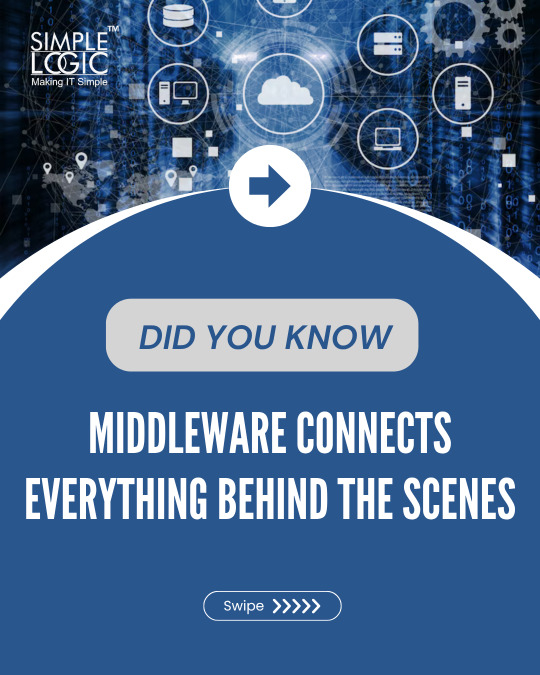
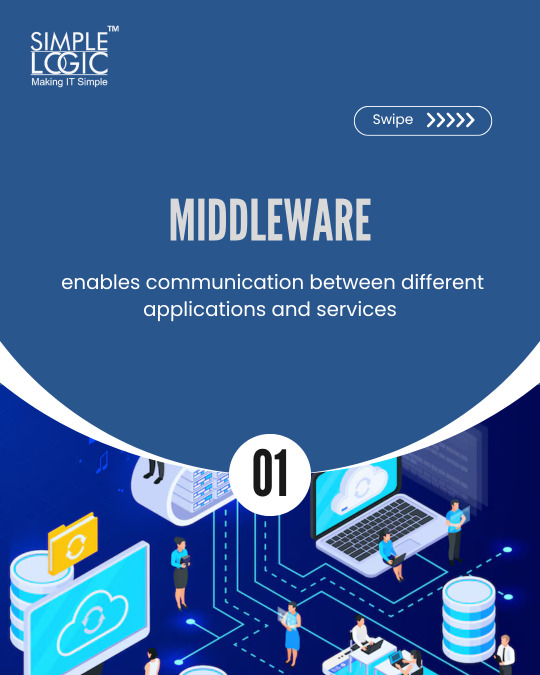
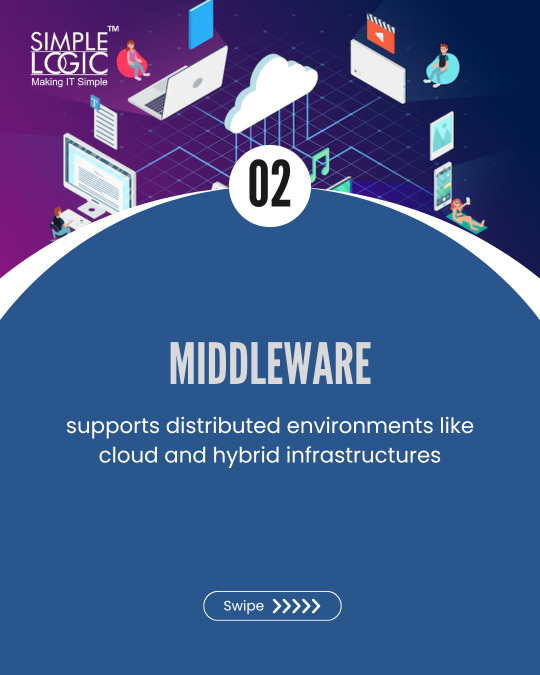
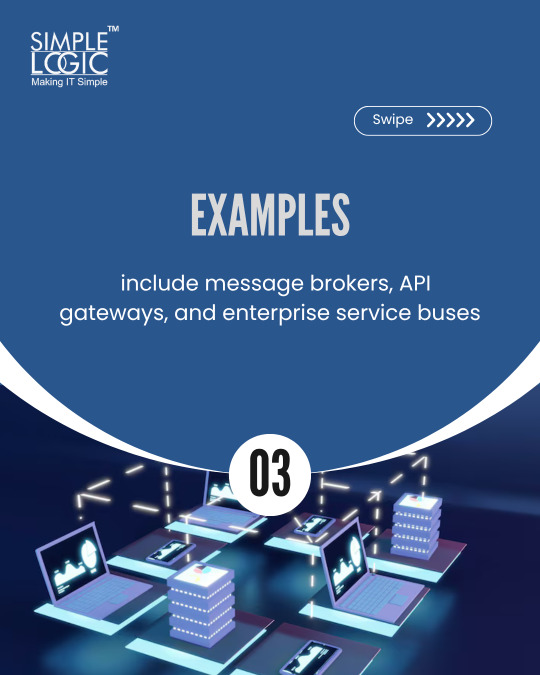
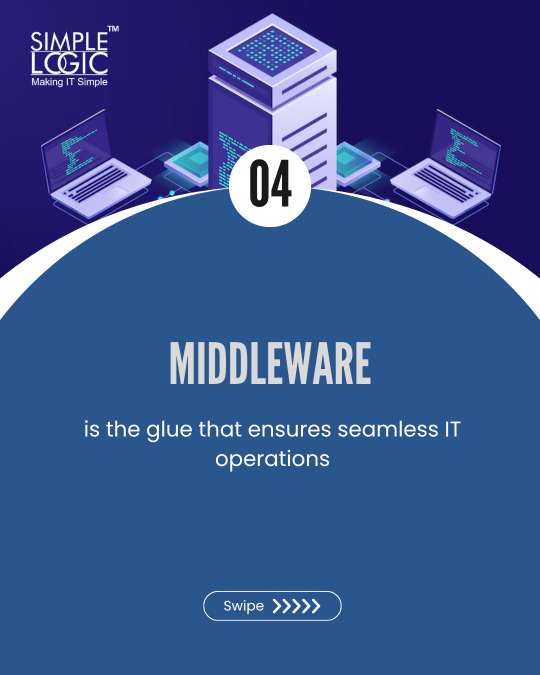

#DidYouKnow Middleware Connects Everything Behind the Scenes🖥️
Swipe left to explore!
💻 Explore insights on the latest in #technology on our Blog Page 👉 https://simplelogic-it.com/blogs/
🚀 Ready for your next career move? Check out our #careers page for exciting opportunities 👉 https://simplelogic-it.com/careers/
#didyouknowfacts#knowledgedrop#interestingfacts#factoftheday#learnsomethingneweveryday#mindblown#didyouknowthat#triviatime#middleware#middlewareservices#communication#application#cloud#apigateways#itoperation#informationtechnology#digitaltransformation#learnsomethingnew#simplelogic#makingitsimple#simplelogicit#makeitsimple#itservices#itconsulting
0 notes
Text

Digital & Cloud Solutions | cloud Transformation Services | Conquerors Tech
#digital engineering services#cloud transformation services#IoT middleware#cloud digital transformation#Digital Engineering#communication middleware for IOT#middleware in IOT
0 notes
Text
Innovate, inspire, achieve—turn your dreams into digital realities
WBC Software Lab | Software Development & IT Solutions | Karaikudi
Are you ready to bring your ideas to life? At Wbc Software Lab, we specialize in crafting beautiful, functional websites and applications that help your business stand out in the digital world.
Whether you need a sleek, user-friendly website or a powerful, custom application, we have the expertise to deliver exactly what you're looking for. Our team of experts works closely with you to understand your vision and turn it into reality.

#software development#IT solutions#ERP#.NET#PHP development#Karaikudi#IT training#cloud services#mobile app development#enterprise integration#middleware solutions#Tally ERP#business management software
0 notes
Text

Digital & Cloud Solutions | cloud Transformation Services | Conquerors Tech
#digital engineering services#cloud transformation services#IoT middleware#cloud digital transformation#Digital Engineering#communication middleware for iot#middleware in iot
1 note
·
View note
Text
Cloud Migration and Integration A Strategic Shift Toward Scalable Infrastructure
In today’s digital-first business environment, cloud computing is no longer just a technology trend—it’s a foundational element of enterprise strategy. As organizations seek greater agility, scalability, and cost-efficiency, cloud migration and integration have emerged as critical initiatives. However, transitioning to the cloud is far from a lift-and-shift process; it requires thoughtful planning, seamless integration, and a clear understanding of long-term business objectives.

What is Cloud Migration and Why Does It Matter
Cloud migration involves moving data, applications, and IT processes from on-premises infrastructure or legacy systems to cloud-based environments. These environments can be public, private, or hybrid, depending on the organization’s needs. While the move offers benefits such as cost reduction, improved performance, and on-demand scalability, the true value lies in enabling innovation through flexible technology infrastructure.
But migration is only the first step. Cloud integration—the process of configuring applications and systems to work cohesively within the cloud—is equally essential. Without integration, businesses may face operational silos, inconsistent data flows, and reduced productivity, undermining the very purpose of migration.
Key Considerations in Cloud Migration
A successful cloud migration depends on more than just transferring workloads. It involves analyzing current infrastructure, defining the desired end state, and selecting the right cloud model and service providers. Critical factors include:
Application suitability: Not all applications are cloud-ready. Some legacy systems may need reengineering or replacement.
Data governance: Moving sensitive data to the cloud demands a strong focus on compliance, encryption, and access controls.
Downtime management: Minimizing disruption during the migration process is essential for business continuity.
Security architecture: Ensuring that cloud environments are resilient against threats is a non-negotiable part of migration planning.
Integration for a Unified Ecosystem
Once in the cloud, seamless integration becomes the linchpin for realizing operational efficiency. Organizations must ensure that their applications, databases, and platforms communicate efficiently in real time. This includes integrating APIs, aligning with enterprise resource planning (ERP) systems, and enabling data exchange across multiple cloud platforms.
Hybrid and Multi-Cloud Strategies
Cloud strategies have evolved beyond single-provider solutions. Many organizations now adopt hybrid (combining on-premise and cloud infrastructure) or multi-cloud (using services from multiple cloud providers) approaches. While this enhances flexibility and avoids vendor lock-in, it adds complexity to integration and governance.
To address this, organizations need a unified approach to infrastructure orchestration, monitoring, and automation. Strong integration frameworks and middleware platforms become essential in stitching together a cohesive IT ecosystem.
Long-Term Value of Cloud Transformation
Cloud migration and integration are not one-time projects—they are ongoing transformations. As business needs evolve, cloud infrastructure must adapt through continuous optimization, cost management, and performance tuning.
Moreover, integrated cloud environments serve as the foundation for emerging technologies like artificial intelligence, data analytics, and Internet of Things (IoT), enabling businesses to innovate faster and more efficiently.
By treating cloud migration and integration as strategic investments rather than tactical moves, organizations position themselves to stay competitive, agile, and future-ready.
#CloudMigration#CloudIntegration#DigitalTransformation#HybridCloud#MultiCloud#CloudComputing#InfrastructureModernization#ITStrategy#BusinessContinuity
2 notes
·
View notes
Text
This Week in Rust 593
Hello and welcome to another issue of This Week in Rust! Rust is a programming language empowering everyone to build reliable and efficient software. This is a weekly summary of its progress and community. Want something mentioned? Tag us at @ThisWeekInRust on X (formerly Twitter) or @ThisWeekinRust on mastodon.social, or send us a pull request. Want to get involved? We love contributions.
This Week in Rust is openly developed on GitHub and archives can be viewed at this-week-in-rust.org. If you find any errors in this week's issue, please submit a PR.
Want TWIR in your inbox? Subscribe here.
Updates from Rust Community
Newsletters
The Embedded Rustacean Issue #42
This Week in Bevy - 2025-03-31
Project/Tooling Updates
Fjall 2.8
EtherCrab, the pure Rust EtherCAT MainDevice, version 0.6 released
A process for handling Rust code in the core kernel
api-version: axum middleware for header based version selection
SALT: a VS Code Extension, seeking participants in a study on Rust usabilty
Observations/Thoughts
Introducing Stringleton
Rust Any Part 3: Finally we have Upcasts
Towards fearless SIMD, 7 years later
LLDB's TypeSystems: An Unfinished Interface
Mutation Testing in Rust
Embedding shared objects in Rust
Rust Walkthroughs
Architecting and building medium-sized web services in Rust with Axum, SQLx and PostgreSQL
Solving the ABA Problem in Rust with Hazard Pointers
Building a CoAP application on Ariel OS
How to Optimize your Rust Program for Slowness: Write a Short Program That Finishes After the Universe Dies
Inside ScyllaDB Rust Driver 1.0: A Fully Async Shard-Aware CQL Driver Using Tokio
Building a search engine from scratch, in Rust: part 2
Introduction to Monoio: A High-Performance Rust Runtime
Getting started with Rust on Google Cloud
Miscellaneous
An AlphaStation's SROM
Real-World Verification of Software for Cryptographic Applications
Public mdBooks
[video] Networking in Bevy with ECS replication - Hennadii
[video] Intermediate Representations for Reactive Structures - Pete
Crate of the Week
This week's crate is candystore, a fast, persistent key-value store that does not require LSM or WALs.
Thanks to Tomer Filiba for the self-suggestion!
Please submit your suggestions and votes for next week!
Calls for Testing
An important step for RFC implementation is for people to experiment with the implementation and give feedback, especially before stabilization.
If you are a feature implementer and would like your RFC to appear in this list, add a call-for-testing label to your RFC along with a comment providing testing instructions and/or guidance on which aspect(s) of the feature need testing.
No calls for testing were issued this week by Rust, Rust language RFCs or Rustup.
Let us know if you would like your feature to be tracked as a part of this list.
Call for Participation; projects and speakers
CFP - Projects
Always wanted to contribute to open-source projects but did not know where to start? Every week we highlight some tasks from the Rust community for you to pick and get started!
Some of these tasks may also have mentors available, visit the task page for more information.
If you are a Rust project owner and are looking for contributors, please submit tasks here or through a PR to TWiR or by reaching out on X (formerly Twitter) or Mastodon!
CFP - Events
Are you a new or experienced speaker looking for a place to share something cool? This section highlights events that are being planned and are accepting submissions to join their event as a speaker.
* Rust Conf 2025 Call for Speakers | Closes 2025-04-29 11:59 PM PDT | Seattle, WA, US | 2025-09-02 - 2025-09-05
If you are an event organizer hoping to expand the reach of your event, please submit a link to the website through a PR to TWiR or by reaching out on X (formerly Twitter) or Mastodon!
Updates from the Rust Project
438 pull requests were merged in the last week
Compiler
allow defining opaques in statics and consts
avoid wrapping constant allocations in packed structs when not necessary
perform less decoding if it has the same syntax context
stabilize precise_capturing_in_traits
uplift clippy::invalid_null_ptr_usage lint as invalid_null_arguments
Library
allow spawning threads after TLS destruction
override PartialOrd methods for bool
simplify expansion for format_args!()
stabilize const_cell
Rustdoc
greatly simplify doctest parsing and information extraction
rearrange Item/ItemInner
Clippy
new lint: char_indices_as_byte_indices
add manual_dangling_ptr lint
respect #[expect] and #[allow] within function bodies for missing_panics_doc
do not make incomplete or invalid suggestions
do not warn about shadowing in a destructuring assigment
expand obfuscated_if_else to support {then(), then_some()}.unwrap_or_default()
fix the primary span of redundant_pub_crate when flagging nameless items
fix option_if_let_else suggestion when coercion requires explicit cast
fix unnested_or_patterns suggestion in let
make collapsible_if recognize the let_chains feature
make missing_const_for_fn operate on non-optimized MIR
more natural suggestions for cmp_owned
collapsible_if: prevent including preceeding whitespaces if line contains non blanks
properly handle expansion in single_match
validate paths in disallowed_* configurations
Rust-Analyzer
allow crate authors to control completion of their things
avoid relying on block_def_map() needlessly
fix debug sourceFileMap when using cppvsdbg
fix format_args lowering using wrong integer suffix
fix a bug in orphan rules calculation
fix panic in progress due to splitting unicode incorrectly
use medium durability for crate-graph changes, high for library source files
Rust Compiler Performance Triage
Positive week, with a lot of primary improvements and just a few secondary regressions. Single big regression got reverted.
Triage done by @panstromek. Revision range: 4510e86a..2ea33b59
Summary:
(instructions:u) mean range count Regressions ❌ (primary) - - 0 Regressions ❌ (secondary) 0.9% [0.2%, 1.5%] 17 Improvements ✅ (primary) -0.4% [-4.5%, -0.1%] 136 Improvements ✅ (secondary) -0.6% [-3.2%, -0.1%] 59 All ❌✅ (primary) -0.4% [-4.5%, -0.1%] 136
Full report here.
Approved RFCs
Changes to Rust follow the Rust RFC (request for comments) process. These are the RFCs that were approved for implementation this week:
No RFCs were approved this week.
Final Comment Period
Every week, the team announces the 'final comment period' for RFCs and key PRs which are reaching a decision. Express your opinions now.
Tracking Issues & PRs
Rust
Tracking Issue for slice::array_chunks
Stabilize cfg_boolean_literals
Promise array::from_fn is generated in order of increasing indices
Stabilize repr128
Stabilize naked_functions
Fix missing const for inherent pointer replace methods
Rust RFCs
core::marker::NoCell in bounds (previously known an [sic] Freeze)
Cargo,
Stabilize automatic garbage collection.
Other Areas
No Items entered Final Comment Period this week for Language Team, Language Reference or Unsafe Code Guidelines.
Let us know if you would like your PRs, Tracking Issues or RFCs to be tracked as a part of this list.
New and Updated RFCs
Allow &&, ||, and ! in cfg
Upcoming Events
Rusty Events between 2025-04-02 - 2025-04-30 🦀
Virtual
2025-04-02 | Virtual (Indianapolis, IN, US) | Indy Rust
Indy.rs - with Social Distancing
2025-04-03 | Virtual (Nürnberg, DE) | Rust Nurnberg DE
Rust Nürnberg online
2025-04-03 | Virtual | Ardan Labs
Communicate with Channels in Rust
2025-04-05 | Virtual (Kampala, UG) | Rust Circle Meetup
Rust Circle Meetup
2025-04-08 | Virtual (Dallas, TX, US) | Dallas Rust User Meetup
Second Tuesday
2025-04-10 | Virtual (Berlin, DE) | Rust Berlin
Rust Hack and Learn
2025-04-15 | Virtual (Washington, DC, US) | Rust DC
Mid-month Rustful
2025-04-16 | Virtual (Vancouver, BC, CA) | Vancouver Rust
Rust Study/Hack/Hang-out
2025-04-17 | Virtual and In-Person (Redmond, WA, US) | Seattle Rust User Group
April, 2025 SRUG (Seattle Rust User Group) Meetup
2025-04-22 | Virtual (Dallas, TX, US) | Dallas Rust User Meetup
Fourth Tuesday
2025-04-23 | Virtual (Cardiff, UK) | Rust and C++ Cardiff
**Beyond embedded - OS development in Rust **
2025-04-24 | Virtual (Berlin, DE) | Rust Berlin
Rust Hack and Learn
2025-04-24 | Virtual (Charlottesville, VA, US) | Charlottesville Rust Meetup
Part 2: Quantum Computers Can’t Rust-Proof This!"
Asia
2025-04-05 | Bangalore/Bengaluru, IN | Rust Bangalore
April 2025 Rustacean meetup
2025-04-22 | Tel Aviv-Yafo, IL | Rust 🦀 TLV
In person Rust April 2025 at Braavos in Tel Aviv in collaboration with StarkWare
Europe
2025-04-02 | Cambridge, UK | Cambridge Rust Meetup
Monthly Rust Meetup
2025-04-02 | Köln, DE | Rust Cologne
Rust in April: Rust Embedded, Show and Tell
2025-04-02 | München, DE | Rust Munich
Rust Munich 2025 / 1 - hybrid
2025-04-02 | Oxford, UK | Oxford Rust Meetup Group
Oxford Rust and C++ social
2025-04-02 | Stockholm, SE | Stockholm Rust
Rust Meetup @Funnel
2025-04-03 | Oslo, NO | Rust Oslo
Rust Hack'n'Learn at Kampen Bistro
2025-04-08 | Olomouc, CZ | Rust Moravia
3. Rust Moravia Meetup (Real Embedded Rust)
2025-04-09 | Girona, ES | Rust Girona
Rust Girona Hack & Learn 04 2025
2025-04-09 | Reading, UK | Reading Rust Workshop
Reading Rust Meetup
2025-04-10 | Karlsruhe, DE | Rust Hack & Learn Karlsruhe
Karlsruhe Rust Hack and Learn Meetup bei BlueYonder
2025-04-15 | Leipzig, DE | Rust - Modern Systems Programming in Leipzig
Topic TBD
2025-04-15 | London, UK | Women in Rust
WIR x WCC: Finding your voice in Tech
2025-04-19 | Istanbul, TR | Türkiye Rust Community
Rust Konf Türkiye
2025-04-23 | London, UK | London Rust Project Group
Fusing Python with Rust using raw C bindings
2025-04-24 | Aarhus, DK | Rust Aarhus
Talk Night at MFT Energy
2025-04-24 | Edinburgh, UK | Rust and Friends
Rust and Friends (evening pub)
2025-04-24 | Manchester, UK | Rust Manchester
Rust Manchester April Code Night
2025-04-25 | Edinburgh, UK | Rust and Friends
Rust and Friends (daytime coffee)
2025-04-29 | Paris, FR | Rust Paris
Rust meetup #76
North America
2025-04-03 | Chicago, IL, US | Chicago Rust Meetup
Rust Happy Hour
2025-04-03 | Montréal, QC, CA | Rust Montréal
April Monthly Social
2025-04-03 | Saint Louis, MO, US | STL Rust
icu4x - resource-constrained internationalization (i18n)
2025-04-06 | Boston, MA, US | Boston Rust Meetup
Kendall Rust Lunch, Apr 6
2025-04-08 | New York, NY, US | Rust NYC
Rust NYC: Building a full-text search Postgres extension in Rust
2025-04-10 | Portland, OR, US | PDXRust
TetaNES: A Vaccination for Rust—No Needle, Just the Borrow Checker
2025-04-14 | Boston, MA, US | Boston Rust Meetup
Coolidge Corner Brookline Rust Lunch, Apr 14
2025-04-17 | Nashville, TN, US | Music City Rust Developers
Using Rust For Web Series 1 : Why HTMX Is Bad
2025-04-17 | Redmond, WA, US | Seattle Rust User Group
April, 2025 SRUG (Seattle Rust User Group) Meetup
2025-04-23 | Austin, TX, US | Rust ATX
Rust Lunch - Fareground
2025-04-25 | Boston, MA, US | Boston Rust Meetup
Ball Square Rust Lunch, Apr 25
Oceania
2025-04-09 | Sydney, NS, AU | Rust Sydney
Crab 🦀 X 🕳️🐇
2025-04-14 | Christchurch, NZ | Christchurch Rust Meetup Group
Christchurch Rust Meetup
2025-04-22 | Barton, AC, AU | Canberra Rust User Group
April Meetup
South America
2025-04-03 | Buenos Aires, AR | Rust en Español
Abril - Lambdas y más!
If you are running a Rust event please add it to the calendar to get it mentioned here. Please remember to add a link to the event too. Email the Rust Community Team for access.
Jobs
Please see the latest Who's Hiring thread on r/rust
Quote of the Week
If you write a bug in your Rust program, Rust doesn’t blame you. Rust asks “how could the compiler have spotted that bug”.
– Ian Jackson blogging about Rust
Despite a lack of suggestions, llogiq is quite pleased with his choice.
Please submit quotes and vote for next week!
This Week in Rust is edited by: nellshamrell, llogiq, cdmistman, ericseppanen, extrawurst, U007D, joelmarcey, mariannegoldin, bennyvasquez, bdillo
Email list hosting is sponsored by The Rust Foundation
Discuss on r/rust
2 notes
·
View notes
Text
How-To IT
Topic: Core areas of IT
1. Hardware
• Computers (Desktops, Laptops, Workstations)
• Servers and Data Centers
• Networking Devices (Routers, Switches, Modems)
• Storage Devices (HDDs, SSDs, NAS)
• Peripheral Devices (Printers, Scanners, Monitors)
2. Software
• Operating Systems (Windows, Linux, macOS)
• Application Software (Office Suites, ERP, CRM)
• Development Software (IDEs, Code Libraries, APIs)
• Middleware (Integration Tools)
• Security Software (Antivirus, Firewalls, SIEM)
3. Networking and Telecommunications
• LAN/WAN Infrastructure
• Wireless Networking (Wi-Fi, 5G)
• VPNs (Virtual Private Networks)
• Communication Systems (VoIP, Email Servers)
• Internet Services
4. Data Management
• Databases (SQL, NoSQL)
• Data Warehousing
• Big Data Technologies (Hadoop, Spark)
• Backup and Recovery Systems
• Data Integration Tools
5. Cybersecurity
• Network Security
• Endpoint Protection
• Identity and Access Management (IAM)
• Threat Detection and Incident Response
• Encryption and Data Privacy
6. Software Development
• Front-End Development (UI/UX Design)
• Back-End Development
• DevOps and CI/CD Pipelines
• Mobile App Development
• Cloud-Native Development
7. Cloud Computing
• Infrastructure as a Service (IaaS)
• Platform as a Service (PaaS)
• Software as a Service (SaaS)
• Serverless Computing
• Cloud Storage and Management
8. IT Support and Services
• Help Desk Support
• IT Service Management (ITSM)
• System Administration
• Hardware and Software Troubleshooting
• End-User Training
9. Artificial Intelligence and Machine Learning
• AI Algorithms and Frameworks
• Natural Language Processing (NLP)
• Computer Vision
• Robotics
• Predictive Analytics
10. Business Intelligence and Analytics
• Reporting Tools (Tableau, Power BI)
• Data Visualization
• Business Analytics Platforms
• Predictive Modeling
11. Internet of Things (IoT)
• IoT Devices and Sensors
• IoT Platforms
• Edge Computing
• Smart Systems (Homes, Cities, Vehicles)
12. Enterprise Systems
• Enterprise Resource Planning (ERP)
• Customer Relationship Management (CRM)
• Human Resource Management Systems (HRMS)
• Supply Chain Management Systems
13. IT Governance and Compliance
• ITIL (Information Technology Infrastructure Library)
• COBIT (Control Objectives for Information Technologies)
• ISO/IEC Standards
• Regulatory Compliance (GDPR, HIPAA, SOX)
14. Emerging Technologies
• Blockchain
• Quantum Computing
• Augmented Reality (AR) and Virtual Reality (VR)
• 3D Printing
• Digital Twins
15. IT Project Management
• Agile, Scrum, and Kanban
• Waterfall Methodology
• Resource Allocation
• Risk Management
16. IT Infrastructure
• Data Centers
• Virtualization (VMware, Hyper-V)
• Disaster Recovery Planning
• Load Balancing
17. IT Education and Certifications
• Vendor Certifications (Microsoft, Cisco, AWS)
• Training and Development Programs
• Online Learning Platforms
18. IT Operations and Monitoring
• Performance Monitoring (APM, Network Monitoring)
• IT Asset Management
• Event and Incident Management
19. Software Testing
• Manual Testing: Human testers evaluate software by executing test cases without using automation tools.
• Automated Testing: Use of testing tools (e.g., Selenium, JUnit) to run automated scripts and check software behavior.
• Functional Testing: Validating that the software performs its intended functions.
• Non-Functional Testing: Assessing non-functional aspects such as performance, usability, and security.
• Unit Testing: Testing individual components or units of code for correctness.
• Integration Testing: Ensuring that different modules or systems work together as expected.
• System Testing: Verifying the complete software system’s behavior against requirements.
• Acceptance Testing: Conducting tests to confirm that the software meets business requirements (including UAT - User Acceptance Testing).
• Regression Testing: Ensuring that new changes or features do not negatively affect existing functionalities.
• Performance Testing: Testing software performance under various conditions (load, stress, scalability).
• Security Testing: Identifying vulnerabilities and assessing the software’s ability to protect data.
• Compatibility Testing: Ensuring the software works on different operating systems, browsers, or devices.
• Continuous Testing: Integrating testing into the development lifecycle to provide quick feedback and minimize bugs.
• Test Automation Frameworks: Tools and structures used to automate testing processes (e.g., TestNG, Appium).
19. VoIP (Voice over IP)
VoIP Protocols & Standards
• SIP (Session Initiation Protocol)
• H.323
• RTP (Real-Time Transport Protocol)
• MGCP (Media Gateway Control Protocol)
VoIP Hardware
• IP Phones (Desk Phones, Mobile Clients)
• VoIP Gateways
• Analog Telephone Adapters (ATAs)
• VoIP Servers
• Network Switches/ Routers for VoIP
VoIP Software
• Softphones (e.g., Zoiper, X-Lite)
• PBX (Private Branch Exchange) Systems
• VoIP Management Software
• Call Center Solutions (e.g., Asterisk, 3CX)
VoIP Network Infrastructure
• Quality of Service (QoS) Configuration
• VPNs (Virtual Private Networks) for VoIP
• VoIP Traffic Shaping & Bandwidth Management
• Firewall and Security Configurations for VoIP
• Network Monitoring & Optimization Tools
VoIP Security
• Encryption (SRTP, TLS)
• Authentication and Authorization
• Firewall & Intrusion Detection Systems
• VoIP Fraud DetectionVoIP Providers
• Hosted VoIP Services (e.g., RingCentral, Vonage)
• SIP Trunking Providers
• PBX Hosting & Managed Services
VoIP Quality and Testing
• Call Quality Monitoring
• Latency, Jitter, and Packet Loss Testing
• VoIP Performance Metrics and Reporting Tools
• User Acceptance Testing (UAT) for VoIP Systems
Integration with Other Systems
• CRM Integration (e.g., Salesforce with VoIP)
• Unified Communications (UC) Solutions
• Contact Center Integration
• Email, Chat, and Video Communication Integration
2 notes
·
View notes
Text
SAP Basis
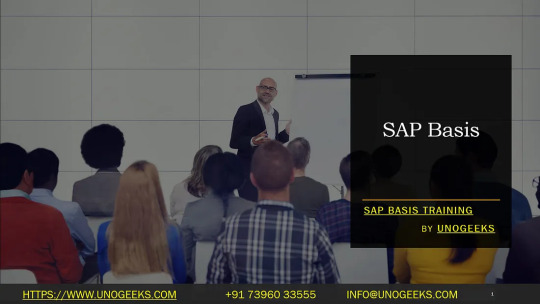
SAP Basis: The Backbone of Your SAP Landscape
SAP applications form the core of many modern enterprises. Financial data, customer interactions, supply chain logistics, and many other critical business operations rely on SAP’s robust solutions. But what powers these solutions? That’s where SAP Basis comes in.
What is SAP Basis?
In simple terms, SAP Basis is the technological foundation upon which SAP applications are built and run. It’s like the operating system specifically for your SAP world. Basis provides a set of middleware components and administration tools that ensure your SAP applications function smoothly and reliably.
Key Responsibilities of an SAP Basis Administrator
SAP Basis administrators are the unsung heroes of the SAP world, responsible for a wide range of tasks:
Installation and Configuration: Basis admins handle the initial installation and setup of SAP systems, ensuring they’re configured correctly for your business needs.
System Administration: They perform ongoing tasks like monitoring system health, applying patches and upgrades, and managing system resources.
Database Management: This includes database installation, configuration, backup and restore processes, and overall database health.
Performance Tuning: Basis admins identify bottlenecks, optimize settings, and ensure applications run at their peak.
User Management: Creating and managing user accounts, assigning roles and authorizations for secure access control.
Troubleshooting: When problems arise, these experts step up to diagnose and resolve issues promptly, minimizing downtime for the business.
Transport Management: They oversee the movement of code changes and configuration updates between different SAP environments (e.g., development, testing, production).
Components of SAP Basis
Some core components that make up SAP Basis include:
SAP NetWeaver: The core technology platform that provides the foundation for different SAP products.
ABAP Workbench: The development environment for creating custom ABAP code (SAP’s primary programming language).
SAP GUI: The graphical user interface used to interact with SAP systems.
Transport Management System: Tools for managing and tracking changes across SAP environments.
Solution Manager: A centralized platform for system monitoring, diagnostics, and support tools.
Why is SAP Basis Important?
Reliability and Stability: A well-managed SAP Basis system means your critical business applications will run smoothly, minimizing disruptions and downtime.
Performance: Basis expertise ensures that your SAP applications are optimized to deliver their best, promoting efficient business operations.
Security: Basis includes a suite of tools to manage user access, protect sensitive data, and ensure compliance with security standards.
Agility: A flexible Basis layer gives your business the ability to adapt to changing needs by scaling SAP deployments or introducing new components.
Becoming an SAP Basis Administrator
A career in SAP Basis is both challenging and rewarding. If you have a knack for technical troubleshooting, problem-solving, and enjoy working with complex systems, here’s how to get started:
Get a Technical Foundation: A background in computer science, database administration, or system administration is a strong starting point.
Gain SAP Expertise: Take SAP Basis training courses and explore online resources and tutorials.
Certifications: Consider getting SAP-certified in Basis administration to validate your skills.
Hands-on Experience: Look for internship or entry-level positions that allow you to work on real SAP systems.
The Future of SAP Basis
As SAP continues to evolve into a cloud-centric platform, Basis will adapt too. Knowledge of cloud technologies, containerization, and automation will become increasingly valuable for Basis administrators.
youtube
You can find more information about SAP BASIS in this SAP BASIS Link
Conclusion:
Unogeeks is the №1 IT Training Institute for SAP BASIS Training. Anyone Disagree? Please drop in a comment
You can check out our other latest blogs on SAP BASIS here — SAP BASIS Blogs
You can check out our Best In Class SAP BASIS Details here — SAP BASIS Training
Follow & Connect with us:
— — — — — — — — — — — -
For Training inquiries:
Call/Whatsapp: +91 73960 33555
Mail us at: [email protected]
Our Website ➜ https://unogeeks.com
Follow us:
Instagram: https://www.instagram.com/unogeeks
Facebook: https://www.facebook.com/UnogeeksSoftwareTrainingInstitute
Twitter: https://twitter.com/unogeek
2 notes
·
View notes
Text
Platform as a Service (PaaS)

Platform as a Service (PaaS) is a cloud computing service model that provides a platform allowing customers to develop, run, and manage applications without the complexity of building and maintaining the underlying infrastructure. PaaS provides a comprehensive environment that includes development tools, middleware, and runtime services to streamline the application development and deployment process. Here are key features and aspects of PaaS:
Key Features of PaaS:
Development Tools:
PaaS offers a set of tools and services for application development, including integrated development environments (IDEs), version control, and testing frameworks.
Middleware:
PaaS includes middleware services that facilitate communication and integration between different components of an application. This can include databases, messaging systems, and more.
Runtime Services:
PaaS provides runtime services such as operating systems, web servers, and runtime environments. Developers can focus on writing code without worrying about the underlying infrastructure.
Scalability:
PaaS platforms typically offer automatic scaling to handle changes in application demand. This ensures that resources are allocated efficiently, and the application can handle varying workloads.
Multi-Tenancy:
PaaS platforms often support multi-tenancy, allowing multiple users or organizations to share the same infrastructure and resources while maintaining isolation.
Integration with Services:
PaaS allows integration with various external services, such as databases, messaging systems, authentication services, and more, to enhance the functionality of applications.
Deployment and Management:
PaaS simplifies the deployment process, offering tools for application deployment, version control, and monitoring. It often includes management tools for application lifecycle management.
Advantages of PaaS:
Faster Development:
PaaS accelerates the development process by providing pre-built tools and services, reducing the need for developers to manage infrastructure details.
Cost Efficiency:
Developers can focus on coding, while the PaaS provider handles infrastructure maintenance and management, leading to cost savings.
Scalability and Flexibility:
PaaS platforms enable easy scaling of applications based on demand, providing flexibility to handle varying workloads.
Reduced Complexity:
Developers don't need to worry about managing the underlying infrastructure, operating systems, or runtime environments, reducing complexity and allowing them to focus on writing code.
Collaboration:
PaaS facilitates collaboration among development teams, as they can work on the same platform and easily share resources.
Automatic Updates:
PaaS providers handle updates and patches for underlying software, ensuring that the platform is up-to-date and secure.
Resource Optimization:
PaaS platforms optimize resource usage, allocating resources based on application requirements to avoid overprovisioning.
Rapid Prototyping:
Developers can quickly prototype and experiment with ideas without the need to set up and configure infrastructure.
Cloud computing training course in Pune
3 notes
·
View notes
Text
Top Blockchain Application Development Services in 2025
Over recent years, the blockchain sector has reached a certain level of maturity. Adoption is currently peaking across industries such as banking, healthcare, logistics, and digital identity. Hence, businesses are not tinkering with blockchain anymore; they want to build real, scalable solutions. Providing Blockchain app development services forms the backbone of these innovations, assisting businesses in transforming their decentralized concepts into reality through expert consultation, development, and support. Such services become vital for any company wishing to stay ahead, cut inefficiencies, and forge a secure digital ecosystem worthy of user trust.
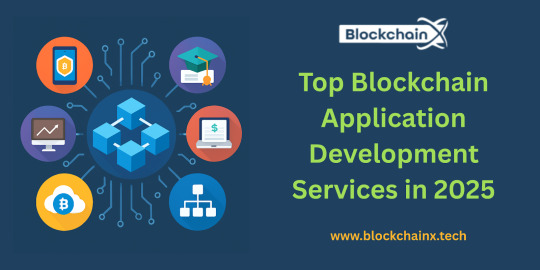
1. End-to-End Blockchain Consulting and Strategy
The very start of any successful blockchain solution rests upon a strategic foundation. Top engineers don't just dive into writing code but guide you in every step of crafting a solution. In general, the consulting process comprises the identification of use cases, choice of the right blockchain protocol (be it Ethereum, Solana, or Hyperledger), and if applicable, the designing of tokenomics. This is followed by an assessment in 2025 of how scalable, interoperable, and fit within regulations each solution is considered to be. They then begin working alongside the stakeholders in defining the milestones that they must achieve on the path to avoid technical pitfalls and create a realistic roadmap that aligns itself with the short-term objectives and the long-term vision of another party. Hence, this layer ensures that strategic projects are not built and their success lies within this frame.
2. Smart Contract Development
Smart contracts are programmable engines behind almost every blockchain application. These contracts self-execute, thereby removing intermediaries, limiting chances of fraud, and allowing for consistent execution. In 2025, top-tier blockchain development firms provide high-end smart contract development with a few extra features such as gas optimization, modular logic, upgradeability, and a fluid way to consume external data from oracles. The companies undertake further testing in testnets and audit across tools and manual auditing. Whether you are trying to build a DeFi protocol, an NFT marketplace, or a DAO voting system, the backbone is a good smart contract that is usually ensured by top developers for strength and safety.
3. dApp Development Across Multiple Platforms
dApps are becoming crucial to countless industries, their doors open to censorship resistance, user control, and global reach. The most trusted blockchain app developers in the year 2025 will provide full-cycle dApp development, beginning with user-centric design and finalizing with a rock-solid backend infrastructure and blockchain layer integration. They have the capability to make the application cross-chain, like Ethereum, Avalanche, Arbitrum, or BNB Chain. Services also extend to wallet integrations (such as MetaMask and WalletConnect), gasless transactions, and token gating. Furthermore, the professionals are now including AI capabilities inside the dApp for enhanced user experience, workflow automation, and decision support.
4. Blockchain Integration with Legacy Systems
Many enterprises operate on legacy infrastructure that simply does not support decentralized applications. Yet, the best blockchain service providers foster the capacity to address this gap through custom-built middleware solutions. These integrations connect the blockchain networks with CRMs or ERP systems such as SAP or Oracle; cloud environments, including AWS and Azure; and conventional databases. With such advanced feature capabilities as real-time syncing, event triggers, and data mirroring between the on-chain and off-chain layers, companies can go the last mile and apply blockchains in operations without interrupting any processes. Moreover, besides acting as technical compatibility services, they add alternative layers for compliance and audit trails that regulated industries may require, such as finance and healthcare.
5. NFT and Tokenization Solutions
NFT technologies will make everything possible to be tokenized across industries everywhere in the year 2025-from tokenizing of properties, luxury items, digital identities, to academic credentials. Major blockchain developers deliver an end-to-end NFT solution including token creation (ERC-721, ERC-1155, etc.), marketplace development, cross-chain minting, and intricate advanced metadata management. Compatibility with legal regulations incorporating royalties, auction systems, and secondary sale mechanisms is also considered. With an increasing demand to tokenize real-world assets, companies are relying on experienced developers to build secure, scalable platforms that enable liquidity and digital ownership.
6. Private and Consortium Blockchain Development
Private blockchain systems, and more so consortium ones, are preferred in many businesses to control access, increase transaction speed, and maintain confidentiality, in contrast to public systems that are ideal for transparency. Custom solutions are provided by blockchain developers in 2025 using Hyperledger Fabric, R3 Corda, and Quorum, among others. These services include setting up the network, managing permissions, deploying smart contracts, assigning roles and access, and more. Defining governance structures will also be aided by them together with processes for onboarding and rules for consortium members. For industries such as supply chain, insurance, or healthcare, where privacy and control are a top concern, these private blockchain solutions strike a perfect balance between innovation and compliance.
7. Blockchain Maintenance and Support
Once your blockchain application goes live, it needs to be continuously monitored and maintained to remain functional, secure, and updated. The elite service providers offer 24/7 monitoring, performance optimization, scalability improvements, and bug fixing on the fly. They provide dashboards for real-time analytics and support upgrades when protocols differ and even have features for end-user support. A proactive approach to maintenance will ensure that your blockchain app continues to deliver value, adapt to user demands, and comply with network upgrades or regulatory mandates. Long-term support is especially vital in keeping up with the rapid advancement brought about in the blockchain landscape.
8. Web3 Wallet and Exchange Development
Since wallets and exchanges make the bridge to the blockchain world, they have to act as the foundational pillars of Web3. By 2025, crème de la crème developers will be building Web3 wallets furnished with biometric login support, multi-chain token support, staking options, and DEXs-in-the-app themselves. They also make sure to engineer safe, compliant crypto exchanges, both decentralized and centralized, bearing features such as real-time trade engines, liquidity management, fiat gateways, and user verification workings. The applications should support heavy load, attack resilience, and have a flawless user experience on a desktop as well as on mobile.
Conclusion
The increase in blockchain adoption in 2025 changed the transparency, automation, and security expectations of conducting business. However, developing a successful blockchain solution requires more than just passion: it takes skills, planning, and execution. The greatest opportunities decentralization has to give are granted to those who choose a firm that offers trustworthy, scalable, and future-ready custom blockchain app development services. When it comes to solving business problems through blockchain, smart contract development, dApp development, NFT development, and enterprise blockchain development, the right partner will ensure that the blockchain story of the client is both creative and meaningful.
0 notes
Text
🌐Openshift Middleware Services Transform Your IT with Openshift Middleware
☁️Hybrid Cloud Flexibility Easily manage hybrid cloud environments with Openshift solutions
📦Containerized Deployment Streamline app deployment with container based architecture
⚙️Scalability & Automation Automatically scale applications based on real time demand
🔐Enterprise-Grade Security Benefit from robust security features and compliance support
🚀Empower Your Cloud Journey with Openshift 📧 Email: [email protected] 📞 Phone: +91 86556 16540
To know more about Openshift Middleware Services click here 👉 https://simplelogic-it.com/openshift-middleware-services/
Visit our website 👉 https://simplelogic-it.com/
💻 Explore insights on the latest in #technology on our Blog Page 👉 https://simplelogic-it.com/blogs/
🚀 Ready for your next career move? Check out our #careers page for exciting opportunities 👉 https://simplelogic-it.com/careers/
#Middleware#MiddlewareServices#Openshift#Cloud#Flexibility#Deployment#Application#Security#Support#CloudServices#OpenshiftMiddleware#SimpleLogicIT#MakingITSimple#MakeITSimple#SimpleLogic#ITServices#ITConsulting
0 notes
Text
Learning ASP.NET Core Online: Tips for Fast-Tracking Your Skills
In the rapidly evolving tech world, staying ahead means continuously upgrading your skill set. Among the most in-demand frameworks today is ASP.NET Core, and mastering it can open doors to exciting development careers. For those ready to dive in, enrolling in an asp net core online course or committing to a structured ASP.NET Core training online can be your golden ticket.
Whether you're a complete beginner or transitioning from another framework, this article is your comprehensive guide to learning ASP.NET Core online efficiently. From structured strategies to tips that actually work, you’ll find everything you need here.
Why ASP.NET Core is Worth Learning
ASP.NET Core is a modern, high-performance framework developed by Microsoft for building cloud-based, internet-connected applications. It's open-source, cross-platform, and incredibly fast. With more companies adopting microservices architecture and container-based deployment, ASP.NET Core is increasingly at the forefront.
Power of ASP.NET Core in the Job Market
Many organizations are migrating their legacy .NET applications to ASP.NET Core to take advantage of its speed, scalability, and flexibility. Knowing this framework gives you a competitive edge in roles like backend developer, full-stack developer, and DevOps engineer.
Best Practices to Start Learning ASP.NET Core Online
1. Set Clear Goals
Before jumping into any online course, define what you want to achieve. Are you aiming for certification, job readiness, or just knowledge enhancement? Having a goal will help you choose the right course and maintain your motivation.
2. Choose Structured Learning Paths
A random collection of YouTube tutorials may not provide a comprehensive understanding. Instead, opt for a complete course structure that includes fundamentals, advanced topics, real-world projects, and assessments. Platforms offering certifications can also boost your resume.
3. Use Hands-On Projects to Practice
Theory alone won't help you master ASP.NET Core. Apply what you learn by building projects such as:
A blog or CMS
An eCommerce store
A RESTful API with Entity Framework
Microservices-based applications
These not only reinforce concepts but also enrich your portfolio.
Top Resources to Fast-Track Your Learning
1. Microsoft Learn
Microsoft's own documentation and learning paths are incredibly thorough. They are up-to-date, official, and cover everything from beginner to advanced topics.
2. Community Blogs and GitHub Repositories
Explore ASP.NET Core projects on GitHub. These repositories often include documentation, unit tests, and CI/CD integrations—valuable skills to learn alongside coding.
3. Enroll in a Quality ASP.NET Core Online Course
Platforms like ScholarHat offer courses tailored to fast-tracking your learning, complete with mentorship, projects, and quizzes. Their ASP.NET Core training online is structured to help learners become job-ready.
Common Mistakes to Avoid
1. Skipping Fundamentals
ASP.NET Core builds upon many essential concepts such as MVC architecture, dependency injection, middleware, and routing. Missing these can hinder your growth.
2. Not Writing Enough Code
Many learners spend too much time watching lectures without coding. Always supplement videos with active development time.
3. Ignoring Testing and Debugging
Good developers know how to test and debug effectively. Make use of xUnit, Moq, and built-in debugging tools in Visual Studio or Visual Studio Code.
Learning Path for Different Levels
Beginner Level
Learn C# fundamentals
Understand .NET basics
Explore MVC pattern
Build a simple CRUD application
Intermediate Level
Dependency injection
Middleware pipeline
Authentication & Authorization
Unit Testing & Debugging
Advanced Level
API development
Integrating with third-party APIs
CI/CD with Azure DevOps
Containerization with Docker
How to Stay Consistent and Motivated
1. Join Online Communities
Whether it’s Stack Overflow, Reddit, or Discord channels, connecting with fellow learners and professionals keeps you motivated.
2. Take Notes and Revisit Them
Create a personal knowledge base. This will help you during interviews and when revisiting concepts.
3. Track Your Progress
Platforms like ScholarHat provide progress tracking features in their courses. Seeing how far you've come keeps you moving forward.
Career Opportunities After Mastery
Learning ASP.NET Core opens doors to multiple career paths:
Backend Developer
Full Stack Developer
.NET Engineer
Cloud Application Developer
DevOps Engineer
In the middle of your learning journey, make sure to reflect on your progress and adjust your goals accordingly. It's crucial to keep your learning dynamic and project-driven.
Real-World Projects You Can Build
1. Expense Tracker Application
Use CRUD operations, authentication, and charting.
2. Hospital Management System
Implement REST APIs, database integration, and admin panels.
3. Microservice-Based eCommerce Platform
Integrate different services like cart, user, payment, and product services.
4. Portfolio Website
Utilize MVC, Entity Framework, and third-party APIs.
5. Social Media Clone
Create a scalable application with user posts, comments, likes, and notifications.
Conclusion: Fast-Track Your Growth Today
By strategically following the tips outlined above, you can accelerate your learning and build real-world competencies. Learning ASP.NET Core online: tips for fast-tracking your skills doesn’t just equip you with knowledge; it prepares you for success in the development world.
Start your journey today with a structured asp net core online course or a guided ASP.NET Core training online.
Frequently Asked Questions (FAQs)
What is the difference between .NET and ASP.NET Core?
.NET is the overall development platform, while ASP.NET Core is a web framework under .NET used specifically for building web applications.
Can I learn ASP.NET Core without prior coding knowledge?
It's recommended to know C# before diving into ASP.NET Core. It makes understanding the framework much easier.
How long does it take to master ASP.NET Core?
Depending on your pace, dedication, and previous experience, it may take 3 to 6 months.
Is ASP.NET Core open-source?
Yes, ASP.NET Core is completely open-source and maintained by Microsoft and the community.
What are the prerequisites for ASP.NET Core?
A solid understanding of C#, object-oriented programming, and web development basics is essential.
Which IDE is best for ASP.NET Core development?
Visual Studio and Visual Studio Code are both widely used and fully support ASP.NET Core.
Can ASP.NET Core be used for mobile app development?
Indirectly, yes—via APIs that support mobile frontends or with tools like Xamarin.
How do I deploy an ASP.NET Core application?
You can deploy it using Azure, Docker containers, or traditional hosting environments.
Is ASP.NET Core used in large-scale enterprise applications?
Yes, many large enterprises have adopted ASP.NET Core for its performance and scalability.
What certifications are available for ASP.NET Core?
Microsoft and other training platforms offer official certifications that validate your skills in ASP.NET Core.
1 note
·
View note
Text
Building Scalable Web Applications with ASP.NET Core
In the ever-evolving world of web development, building applications that can grow with user demand is critical. ASP.NET Core, Microsoft’s powerful open-source framework, is trusted by developers worldwide to create high-performance, scalable web solutions. To gain hands-on expertise in this robust framework, consider enrolling at the Best DotNet Training Institute in Hyderabad, Kukatpally, KPHB, where expert instructors and practical sessions help turn learners into professionals.
Why Choose ASP.NET Core for Scalable Apps?
ASP.NET Core stands out due to its modern architecture and performance-first approach. It’s lightweight, modular, and built from the ground up to support cloud-based and enterprise-level applications.
Cross-Platform Development: Write once, deploy anywhere—Windows, Linux, or macOS.
An efficient web framework: It's one of the fastest frameworks on the market.
Microservices Ready: Easily build and manage microservices with Docker and Kubernetes support.
Core Features Supporting Scalability
Asynchronous Programming
ASP.NET Core's support for asynchronous programming allows applications to handle multiple requests efficiently, minimizing latency even under high loads.
Built-in Dependency Injection
This helps manage complex application dependencies cleanly, allowing better control and scalability.
Middleware Pipeline
Customize the request-response pipeline to ensure efficient data handling, performance tuning, and modular control.
Integration with Modern Tools and Cloud Platforms
ASP.NET Core seamlessly integrates with:
Azure Cloud Services for flexible deployment and scalability.
Entity Framework Core for efficient data access.
SignalR for real-time web functionalities.
Front-end libraries like Angular and React for building full-stack applications.
These integrations empower developers to build feature-rich, cloud-native applications that scale as user demand grows.
Community Support and Continued Growth
ASP.NET Core benefits from a strong global developer community and regular updates from Microsoft. You’ll find thousands of tutorials, forums, and open-source projects that accelerate your learning and problem-solving.
Conclusion
Developing scalable web applications is no longer optional-it's a fundamental requirement. ASP.NET Core offers the flexibility, performance, and tools needed to build apps that grow with your business. To truly master it and launch a rewarding development career, consider training with Monopoly IT Solutions, where real-world projects, expert trainers, and career guidance await.
#best dotnet training in hyderabad#best dotnet training in kukatpally#best dotnet training in kphb#best .net full stack training
0 notes
Text
WBC Software Lab | Software Development & IT Solutions | Karaikudi
WBC Software Lab emphasizes its 25+ years of expertise in IT training, software development, ERP solutions, and enterprise services for clients in various regions, including Asia and the Middle East. They focus on technologies like .NET, PHP, cloud services, and mobile apps.
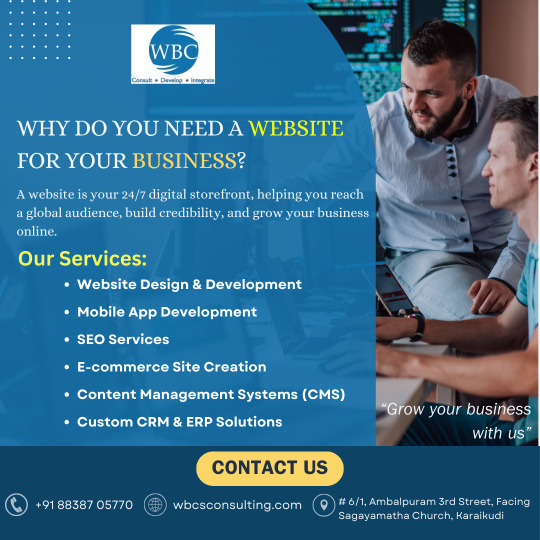
#software development#IT solutions#ERP#.NET#PHP development#Karaikudi#IT training#cloud services#mobile app development#enterprise integration#middleware solutions#Tally ERP#business management software
0 notes